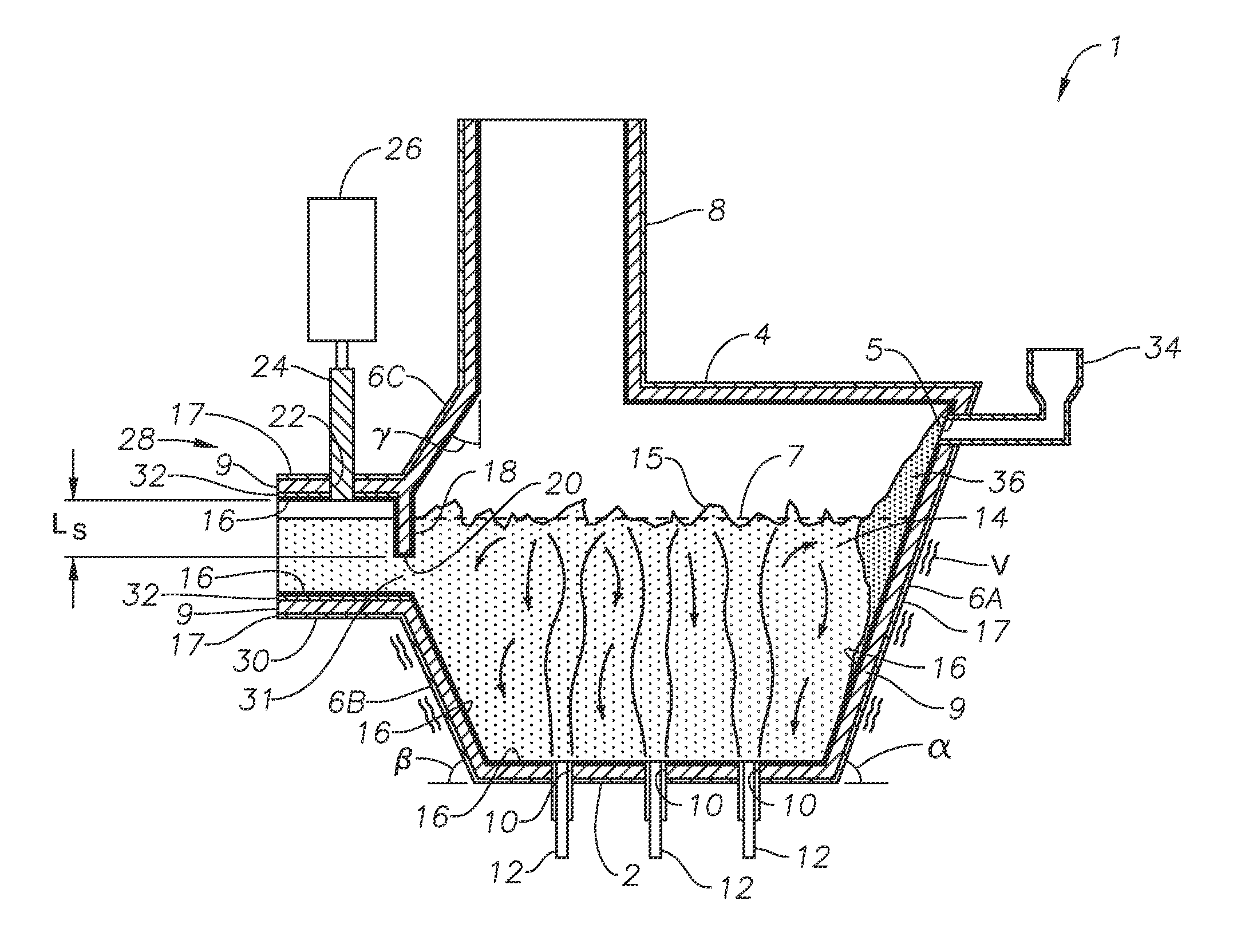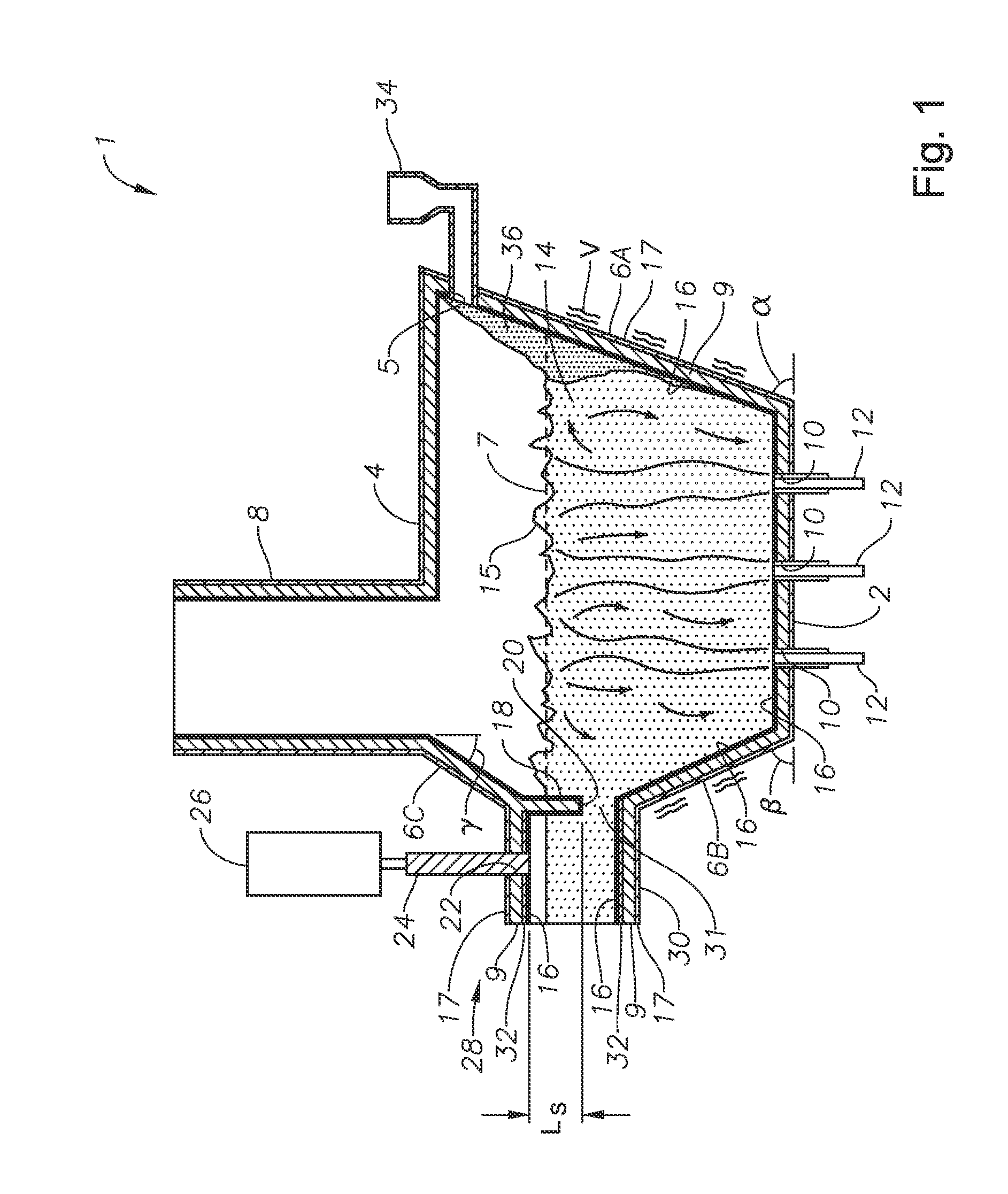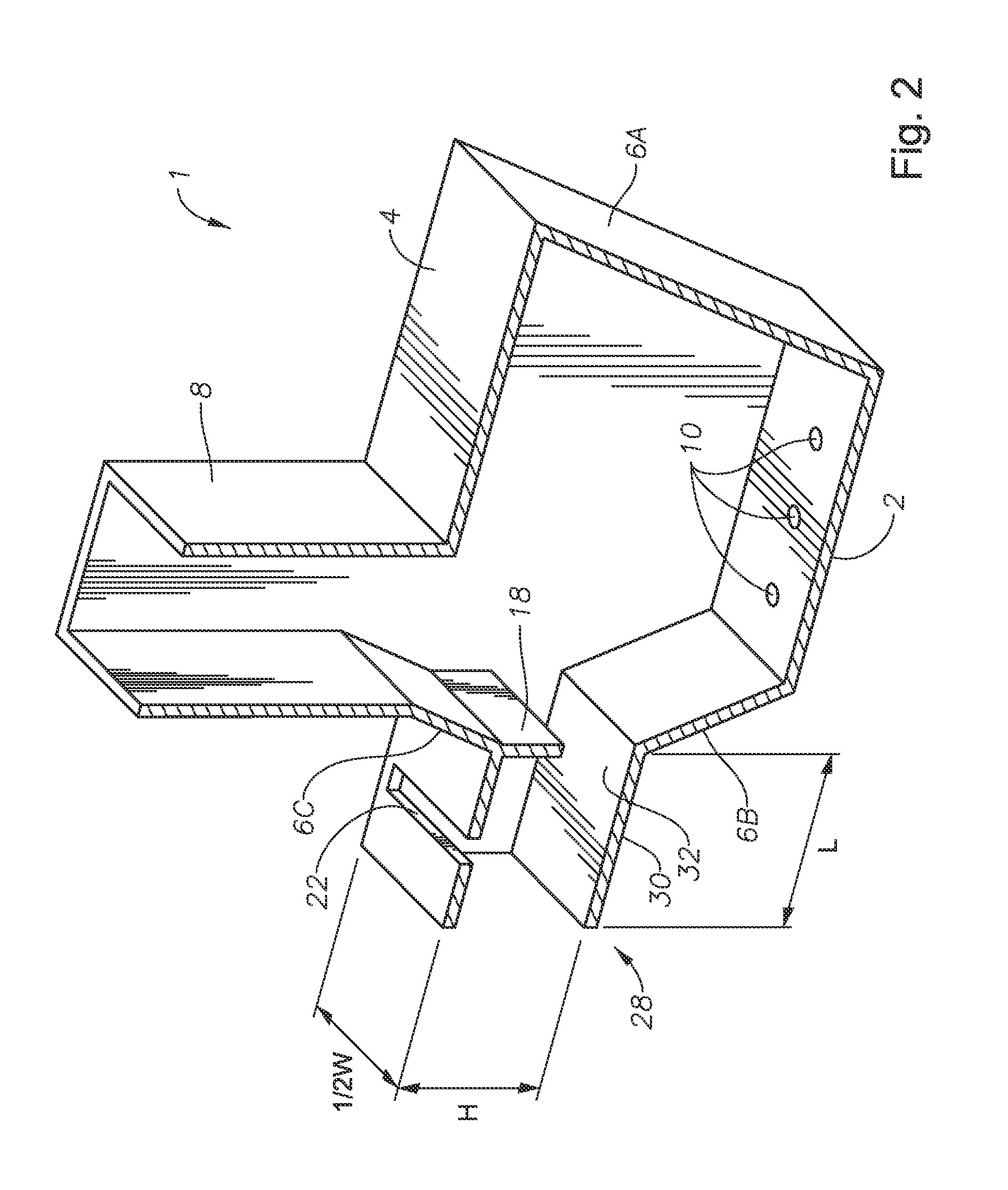Submerged combustion melter comprising a melt exit structure designed to minimize impact of mechanical energy, and methods of making molten glass
- Summary
- Abstract
- Description
- Claims
- Application Information
AI Technical Summary
Benefits of technology
Problems solved by technology
Method used
Image
Examples
embodiment 1
[0037]Referring now to the figures,FIGS. 1, 3, and 5, are vertical sectional views, of three melter apparatus embodiments in accordance with the present disclosure, while FIGS. 2, 4, and 6 are perspective views of the sectional views of the melter embodiments illustrated in FIGS. 1, 3, and 5, respectively. The same numerals and symbols are used for the same or similar features in the various figures. In the perspective views illustrated in FIGS. 2, 4, and 6, it will be understood in each case that some components are not illustrated in order to illustrate more clearly the key features of each embodiment. Melter apparatus embodiment 1 of FIGS. 1 and 2 comprises a floor 2, a roof or ceiling 4, a feed end wall 6A, a first portion of an exit end wall 6B, and a second portion of the exit end wall 6C. Each of floor 2, roof 4, and walls 6A, 6B, and 6C comprise a metal shell 17 and a refractory panel 9, some or all of which may be fluid-cooled. Feed end wall 6A and exit end wall portion 6B ...
embodiment 100
[0050]FIGS. 8, 9 and 10 are logic diagrams illustrating three methods in accordance with the present disclosure. Embodiment 100 of FIG. 8 includes the steps of feeding at least one partially vitrifiable material into a feed inlet of a melting zone of a melter vessel comprising a floor, a ceiling, and a wall connecting the floor and ceiling at a perimeter of the floor and ceiling, the melter vessel comprising a batch feeder attached to the wall or ceiling and an exit end comprising a melter exit structure for discharging molten glass, the melter exit structure fluidly and mechanically connecting the melter vessel to a molten glass conditioning channel, box 102. The method further includes heating the at least one partially vitrifiable material with at least one burner directing combustion products into the melting zone under a level of the molten glass in the zone, and forming the turbulent molten glass while imparting mechanical energy to the melter vessel, box 104. The method also ...
embodiment 200
[0051]FIG. 9 is a logic diagram of another method embodiment 200, which includes the steps of feeding at least one partially vitrifiable material into a feed inlet of a melting zone of a melter vessel comprising a floor, a ceiling, and a wall connecting the floor and ceiling at a perimeter of the floor and ceiling, the melter vessel comprising a batch feeder attached to the wall or ceiling and an exit end comprising a melter exit structure for discharging molten glass, the melter exit structure fluidly and mechanically connecting the melter vessel to a molten glass conditioning channel, box 202, and heating the at least one partially vitrifiable material with at least one burner directing combustion products into the melting zone under a level of the molten glass in the zone, and forming the turbulent molten glass while imparting mechanical energy to the melter vessel, box 204. The method also includes discharging molten glass from the melter vessel through a fluid-cooled transition...
PUM
| Property | Measurement | Unit |
|---|---|---|
| Length | aaaaa | aaaaa |
| Length | aaaaa | aaaaa |
| Length | aaaaa | aaaaa |
Abstract
Description
Claims
Application Information
 Login to View More
Login to View More - R&D
- Intellectual Property
- Life Sciences
- Materials
- Tech Scout
- Unparalleled Data Quality
- Higher Quality Content
- 60% Fewer Hallucinations
Browse by: Latest US Patents, China's latest patents, Technical Efficacy Thesaurus, Application Domain, Technology Topic, Popular Technical Reports.
© 2025 PatSnap. All rights reserved.Legal|Privacy policy|Modern Slavery Act Transparency Statement|Sitemap|About US| Contact US: help@patsnap.com



